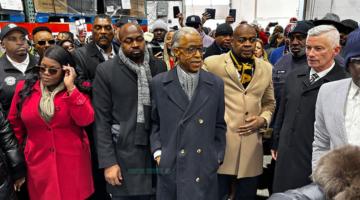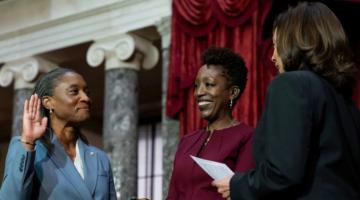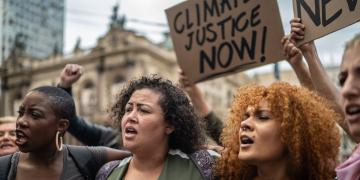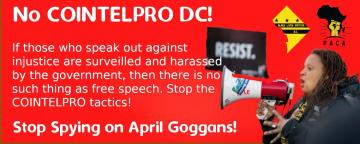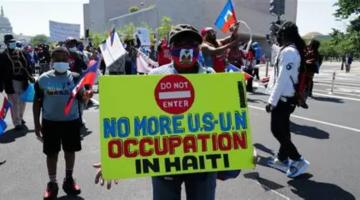DEI isn’t dead—it was never alive to begin with. A corporate pacification project dressed as progress, it launders Black rage into diversity statements while police budgets grow and material conditions collapse.
“The crisis consists precisely in the fact that the old is dying and the new cannot be born; in this interregnum a great variety of morbid symptoms appear” - Antonio Gramsci, Selections From the Prison Notebooks
“As I see it, history moves from one conjuncture to another rather than being an evolutionary flow. And what drives it forward is usually a crisis, when the contradictions that are always at play in any historical moment are condensed” - Stuart Hall, “Interpreting the Crisis” with Doreen Massey (2010)
“To muzzle the roar, the State dispossesses the labor of Black Rage, and harnesses it into a commodity that can be consumed harmlessly as if its original potency is retained.” - Laundering Black Rage: The Washing of Black Death, People, Property, and Profits
“DEI is under attack”, says the news of the day. “DEI must be protected”, says the peeved influencer as we scroll through the posts on social media. “ DEI is dead ”, says a new presidential regime, according to the Associated Press. We hear news like this, and we expect to see Swastikas falling from the sky, but then we look around us and see everyday people doing everyday things, some for the good of it, and some for the bad of it, but all for the everyday. Their day, the day that affects them.
There has been no rush to stockpile the nearly 50 TEDTalk videos on diversity (and inclusion) that are bound to be deleted, at some point, from the TED site or from YouTube since the “attack” has been launched. The knowledge from those speakers is seemingly not at the top of our mind, to preserve the record, to have for future generations, all of the minutes of speeches of motivation and inspiration. There has been no rush to build barricades on the streets , the in-real-life streets, to protect diversity since it has always existed as much as vapor in the everyday experiences of everyday people. The public school system created because of diversity, the housing projects built by diversity, and the food program instituted by diversity need no protection, because diversity never built them. Each of those necessary infrastructures to life was never a feature or aim of diversity. There has been no rush to formulate farewell songs, plan funeral marches, hire professional criers, find the best black drip to wear, or prepare a NOLA-style jazz funeral complete with a second line since the end is nigh. Why? Because everyday people are dealing with everyday things. And those everyday things have never been about the aims and activities of diversity and its subsequent iterations.
In the 1980s, diversity (D), then inclusion (I); diversity and inclusion (DI); equity (E); diversity, equity, and inclusion (DEI); valuing diversity; implicit bias; unconscious bias; equity, diversity, and inclusion (EDI) ; inclusion, diversity, equity, and accessibility (IDEA) ; social justice (SJ); diversity, equity, inclusion, and justice (DEIJ) ; justice, equity, diversity, and inclusion (JEDI) ; diversity, equity, inclusion, and belonging (DEIB) , diversity, equity, inclusion, justice, and belonging ( DEIBJ ); and any other configuration and ordering of these words (as well as, some subtle mention of one of the following: anti-racism, “abolition”, and “decolonization”) highlights the ever-changing evolution of DEI (diversity, equity, and inclusion), the boogie-man of the Right and the savior of a purported Left.
For the purposes of our essay DEI is the catch-all for the phraseology that is the stir of the moment in the United States (US). DEI was crafted to be a counter to the rebellions and power movements of the 1960s and 1970s. A counter-measure .[1] counter-movement .[2]
DEI, at its foundation, has always been guaranteed diminishing returns with each generation. A proclivity to low grade dreams and low grade results that advance a few at the suffering of the whole. Yet, under Anti-DEI, the advancement of a few becomes a rationalization to increasingly attack the whole. All while White Capital advances its dispossession of our planet at our expense. But an analogy is needed to contextualize our points.
Rehabilitating Empire
Say a poor Black neighborhood is rapidly flooded by a deluge of life-threatening drugs. To calm the outrage to their suffering, the kingpin dealing the deadly products finances a (short-staffed) neighborhood rehabilitation center. The center boldly pledges to end the systemic trafficking of drugs. They hold community conversations chronicling addiction and put out ad nauseam statements about how drug addicts matter. Yet, while establishing the center, they simultaneously harness it to launder their drug money. Then years after its construction, a buffoonish but competing kingpin threatens to destroy said rehab center because they say it discriminates against drug dealers. Now enraged at the cruelty of the competing kingpin, the leaders of the poor Black community launch a campaign to defend the bootleg rehab center as if it were their own. Nonetheless, the drugs keep flowing.
To appease some in the community, the competing kingpin offers to build exclusive strip clubs in place of the bootleg rehab—in which they also intend to launder their drug money. They promise to deliver more jobs than the bootleg rehab and make a pledge to hire Black people directly from the neighborhood, not the immigrants who migrated there as of late. They go as far as to claim the migrants are responsible for bringing in drugs, not the known dealers, so the neighborhood should be thankful for the strip clubs. Nonetheless, the drugs keep flowing.
Under either regime, the kingpins are the cause of the drug epidemic in the neighborhood, yet each offers faux remedies (fronts) that are only meant to appear to address the problem, either by surface reform or delusional escape. Neither protesting nor boycotting the fronts would end the scourge of drugs in the community. Thus, if the debate is limited to bootleg rehab or strip club laundries, then the root problem, drug abuse, is never seriously addressed.
Within the analogy, the problem may seem obvious, but that underestimates the extent in which some fronts go to appear as something else. If the rehab center becomes a source of income for social media influencers, academics, community activists, artists, local non-profits, and politicians, then the interests of the neighborhood will likely become buried right beside the bodies taken by the assault of deadly drugs. From this vantage point, the campaign to #SaveTheRehabCenter employs too many careers for drug abuse to ever truly end. Having the problem is far more profitable than solving it.
This is a window into the current discourse surrounding DEI in the US—only worse. In response to police murders in 2020 and the subsequent Black Rage that followed, milquetoast DEI initiatives were offered by the State as a means to appear caring about the issue of police violence. Yet, police killings have continually gone up since 2020, police have gotten more money to kill, and poor Black communities—where most police killings transpire—are still suffering . Unfortunately, DEI initiatives—no matter how well-intentioned—do not stop the cops from pulling the triggers that kill us, nor do they bring us back from the dead. They do not end the occupation of police in poor black neighborhoods either, but they may train cops with the “ sensitivity ” necessary to occupy them. They may also service an ecosystem of aspiring professionals who look like the folks being murdered by police but oddly benefit from their deaths.
In this sense, DEI is bootleg rehab. A rehab center that may liberate a few everyday people from drugs, send a few bright students to medical school on scholarship, or even hire them when they graduate but is deeply unserious in eradicating drug abuse. When a sincere everyday worker makes the eradication of drug abuse a priority, they usually find themselves under siege from their careerist colleagues and the kingpin who funds them. If a competing kingpin exploits this fraudulence for their own cruel political gain, there is no need to defend the fraud as if it is rehab. The front's job is to launder our desire for rehabilitation into our complicity against it. These are the contradictions that DEI has wrought. Nonetheless, the drugs keep flowing.
A Foundation for Pacification
The Long Civil Rights Movement, the (Black) Labor Movement, and the Black Liberation Movement fought, truly fought, against segregation and discrimination. During a moment when all three movements overlapped, the 1960s, the pressure on the State to respond was great. Black Rage, White Fear, is one way to see the basis of what was to come. The rebellions on the streets, which would not yield, were complemented by incessant marches, the irritating demands from organization representatives in closed-door meetings. And the embarrassing viciousness of vigilante counterviolence made the passage of the Civil Rights Act of 1964 necessary to quell the Black Rage that was building up. “ Affirmative Action” policies trickled down into companies and institutions slowly, particularly after a 1965 pandering commencement speech at Howard University by the President Lyndon B Johnson in which he exclaimed,
"FREEDOM IS NOT ENOUGH But freedom is not enough. You do not wipe away the scars of centuries by saying: Now you are free to go where you want, and do as you desire, and choose the leaders you please.”
Here, Johnson framed what would become his affirmative action policy as a remedy to the damage done by White supremacy. Officially, affirmative action was a 1965 Executive Order issued by Johnson (revised in 1967) to combat discrimination in federal contracting and hiring regarding "race, color, religion, sex" and to compel federal contractors to take affirmative action to increase representation of minorities and women. By the next administration, affirmative action was being reframed from its reparative form into a more market friendly policy.
President Richard Nixon, a Republican, implemented the most robust affirmative action policies via the Revised Philadelphia Plan in 1969 following the assassination of Dr. Martin Luther King a year prior. He claimed most Black “militants” were far from anti-colonial freedom fighters but undercover integrationists who wanted inclusion “ in ‑ not as supplicants, but as owners, as entrepreneurs ‑ to have a share of the wealth and a piece of the action.”
On the judicial front, the courts ultimately agreed with Nixon's interpretation of affirmative action. This rationale became more crystalized with the Burger Court and the Regents of the University of California v Bakke 5-4 ruling in 1978. This decision rejected the “racial quotas” that emerged from the Johnson administration. Technically, affirmative action remained legal but the proclaimed spirit of it was dead. In his court opinion, Justice Lewis Powell Jr. argued racial diversity demonstrated a compelling interest to the government in fostering harmonious learning. Thus, diversity became a public good for admissions consideration to reflect a balanced classroom, not a remedy for past oppression. This market friendly alteration of affirmative action—an already inadequate solution— paved the way for what we now know as DEI. If only DEI was simply a public good, making things a “public good” or preventing the privatization of the “public good”. But we digress. Universities and colleges scrambled to reap federal support by being compliant with law and legislation, but these institutions scrambled to perform their duty to influence the minds of future rebels to not rebel. A 1962 Duke University admissions committee report stated ,
“We believe that a policy should be established to enable the admissions officers to seek out students from socioeconomic levels not presently very well-represented in the student bodies of the colleges. The sharp minds and determined spirits of such students should help leaven our mass of upper middle-class, suburban, well-to-do groups.”
Pacification of Rage and rebellion , in the 1960s, was the earliest foundation of DEI.
Reinforcing Hierarchies of Labor
Lip service would not do; programmatic action was now, more than ever, necessary. As the 1978 movie National Lampoon’s Animal House depicted the yesteryear of a 1962 all-White college campus, the Black children of the fictional band, Otis Day and The Knights, were now populating predominantly White Universities and Colleges throughout the United States at a rate unrivaled by other countries with a similar-multi-ethnic society (Brazil, Canada, France, the Republic of South Africa, Turkey, and the United Kingdom). Universities and colleges began allocating space for cultural centers, offices for federally funded TRIO Programs, and TRIO-like programs. Upward Bound, Talent Search, Student Support Services, and Educational Opportunity Centers, on college campuses were complemented by the expansion of the Supplemental Nutrition Assistance Program (SNAP), which finally made relatively good on the promises of the Johnson's War on Poverty, that was evoked nearly 10 years before. Hunger in the US, at least childhood hunger, was nearly vanquished . Every program was prescriptive and every sign of growth was measured.
Organizations instituted official and unofficial quotas to aid that measurement, to let in just enough to not disrupt the order. The willingness to comply was also influenced by the bludgeon of discriminatory lawsuits aided by the newly enforced Equal Employment Opportunity Commission . Race made way for gender in workspace discrimination complaints, setting up the game of oppression Olympics between selective representations of Race and gender. But the two-pronged diversification of education and employment placed the United States far ahead in the global arms race to brain drain the global labor force. Here, highly skilled continental Africans of all genders were lured from their newly emancipated countries and put in competition with Africans in the US for positions initiated by DEI-type efforts by the State asserting piecemeal identity as central to individual success, Pan-African solidarity as an alternative was gradually undermined. Yet, the language of inclusion and the need to recognize people with disabilities were inserted into the aims and infrastructure. The violent suppression of movements through assassinations and the making of a political prisoner population in prisons was the price to pay for removing glass ceilings. Reinforcing the divisions of labor in the newly adapted social hierarchy of neo-colonialism in the 1970s and 1980s, were the ingredients to affirmative action, equal opportunity, and the morphing of DEI.
Globalizing the Product of Cultural Representation
Those hallmarks were bearing significant fruits with the second wave of Black mayors (instituting austerity measures in their cities) with Black congresspersons and a sprinkling of Black governors. The junkyard of Fat Albert and the Cosby Kids made way for the luxuries of middle-class life of the Cosby Show and the educational excellence of A Different World , with one pill a day served to us, figuratively and literally, that made us forget that Black History: [was] Lost, Stolen or Strayed. Achievement trumped all wrongs, and this triumph needed to be celebrated. Multiculturalism was the party. Not to be confused with the bottom-up British Multiculturalism , the political movement that involved a coalition of Black Britons from the Caribbean and the continent of Africa along with Pakistani, Indian, Sikh, Bangladesh, Arab, and radical White victims and subjects of empire from Ireland and the British Isles that was challenging immigration and assimilation policies alongside. No, US multiculturalism was a party, perhaps the party. Because diversity was about “ who was invited ” and inclusion was about “who was being asked to dance”.
So, dance we did. People needed to learn how to “dance” through employee resource groups, DEI training programs, and multicultural teams. But this thrust, once again, was not ably righting wrongs. As the “right” people were selectively snatched from ‘hoods for degrees at universities and colleges, a select few of those graduates were plucked from their ranks and were inserted into key industries looking for global market expansion. Looking and sounding different could make millions for a firm. Chief Diversity Officers sat at the same table as CEOs and CFOs. Vice Presidents of Diversity were on the same picture-framed walls as Presidents. The diversification of the increasing prison population was the price for the diversification in middle-class professions. Reagan and Thatcher were kissing cousins in the closing of factories and the deindustrialization of cities, destroying the Black working class that had long since diversified the factory floor and assembly line in order to thrust the United States and the United Kingdom as early adopters of a new form of governance. The low-wage service jobs that replaced the factory floor remained diverse in color, religion, ability, and gender, but the diversity of poor people’s jobs needed no stated DEI initiative. Capitalism would do.
Thus, globalization was the principal aim in the 1990s of the emergence of (formal) DEI. The first installment of neo-colonial leaders across emerging nation-states and internal colonies in the US had successfully been achieved, so now the neo-liberal policies of plunder were set to reach unforeseen scales. For example, the multinational corporate exploitation of material resources in Africa could be overseen by executives who looked like the poor children digging the blood diamonds.
Diversifying Dominion
Representation at a table was not enough; one’s voice needed to reflect a diversity of people. “Speaking truth to power” was the catchphrase within supposed progressive and radical circles. “Giving voice” was the intent in non-profits, because some unknown wise African elder in some unknown country (since Africa is a country) said, “It takes a village to raise a child”. Full participation and integration into workspaces were paramount. With the advent of the 1990 training, DEI strategies were now important to include in every type of organization. Such important decision-making like dress code, hairstyles, and holiday recognition necessitated it. These were the stuff of inclusive policies, the being asked to dance. All employees had to show a level of cultural competence, meaning that saying “nigger” or displaying centerfolds in the workplace were not appropriate. Such actions could hinder the ideal interactions necessary for wealth accumulation. The prevention of work stoppage was a secondary priority to the primary priority of money tricking in.
Factory floors were once the focus in the 1970s, but in the 2000s, the boardrooms and executive administration offices were the only focus. As equity initiatives, the appropriation of intersectionality and bias-based research used the rhetoric of systemic inequalities to advance itself into the public consciousness as those inequalities only deepened, it is ironic. State bullets now killed a diversity of individuals across racialized and gendered populations. And those killings could be compensated as easily as slavery could be apologized for. A single election of a single person could produce the allusion and illusion of a post-racial United States. The diversification of dominion , in the 2000s and 2010s, was the entrenchment of a structure of DEI that is now being rebuked.
With identity trumping anything else (the collective benefit, the most vulnerable, the material conditions, the public good), justice of any type was never tenable and would never be tenable. And this was/is the quandary of Anti-DEI efforts: we are forced into situations to argue and fight for identity representations that are more likely to harm rather than engage in any meaningful action to change the material conditions in which we live. We are summoned to organize boycotts against drug dealers to keep their substandard rehab initiatives in our neighborhoods, instead of removing the flow of drugs entirely.
Inevitably, organizing around rehab centers that also sell drugs causes backlash. When liberal advocates falsely push DEI as a “ remedy to the racial institutionalized bigotry ,” it morphs DEI into a suitable front for “the far right of a special type ” to launder their racial grievance politics of resentment and White replacement fear-mongering. Thus, DEI is now a booming dog whistle for the far right to weaponize against any populations they intend to mute. Black history , college professors , pro-Palestine protesters , transgender youth , and apparently even the Federal Aviation Administration (FAA) are all subject to the tongue tie. This silencing feeds their fattening base the surplus enjoyment of stripping the groups they deem “undeserving”, as techno-feudalist lords and Zionist oligarchs clean their tax dollars through the State. Concurrently, DEI allows liberals to herd vulnerable populations into “safe spaces” only to abandon them when in need, thereby passing the ammunition to right-wing firing squads as they feign “shock” at the horror they enable. Malcolm X warned us against this form of counterinsurgency,
“the wolf and the fox both belong to the (same) family. Both are canines; and no matter which one of them the Negro places his trust in, he never ends up in the White House, but always in the dog house.”
A Low Grade Front
Malcolm's crucial warning was never heeded. We (some of us) found sanctuary under the front of the liberal canine, thinking the other feigned canid would never trespass our proverbial “seat at the table.” This short-sighted strategy steadily lowered our defenses and consequently produced some of our worst offspring. With each generation of first (Black), was a neo-colonial class less incentivized to sacrifice for the collective. Instead, low-grade versions of the intent actualized as a sort of social change exchanged for home luxuries and trips to safari Africa. For every first in the executive, legislative, and judiciary branch like Judge James B. Parsons, upholding the tenants’ bill of rights and sending corporate executives to jail in the 1960s, there are now Black Mayors exclusively using $26k in city funds for a single personal trip (South Fulton), being away from the office on a trip in the midst of a disaster (Los Angeles), taking 64 trips over the span of 42 months (St. Louis), amassing and using city purchased gift cards for personal use (Baltimore), taking bribes from other countries in exchange for real estate deals (New York), building a $90 million police warfare training city while denying the democratic will of the people (Atlanta) and closing 34 public schools and cutting $560 million from a public school system (Detroit). The diminishing and low-grade returns of DEI, with each subsequent generation and with each subsequent new “hire”.
But this is nothing new. The gloss, the shine, and the luster of the Congressional Black Caucus, the National Conference of Black Mayors, and the Conference of National Black Churches endorsed the 1994 Crime Bill. And founding members of what would become the Congressional Black Caucus stood in the way of eliminating the United States Electoral College in 1969 and 1970.
Labor, actual labor, never seemed to have been a hallmark of DEI, as Black workers remain the least likely to be hired and the most likely to be fired, thereby contributing to our strong representation in unemployment percentages and rates. And labor, actual labor, will never likely be a hallmark of any material condition change, especially after Amazon gifted the Congressional Black Caucus with a $1.8 million donation (Target being among other donors that have contributed over $1 million to the Congressional Black Caucus Foundation coffers). An internal class struggle, led/facilitated/enabled by a Black class of governing elites and managers, has captured collective Black interests. Under the 119th United States Congress, with 62 Black legislators, at least, poverty and unemployment are diverse.
And these are the fruits, not the bad fruits, of DEI. Our desire for identity representation paid little attention to political and ideological representation. All the gains of DEI have been representative and linguistic, only. The acceptance of holidays, selective cultural figures, appropriated speeches and quotes, books on shelves, legal victories of looks in workplaces, dictionary inclusions, honorary street names, etc. The allowance for its existence by capitalism is a product of capitalist realism, the notion that there is no alternative to the reality in which we live. Thus, any solution to our conditions is only poised to alleviate certain effects of the harm of those conditions, but never rid ourselves of it. DEI rids us of nothing. It calls out, cancels, claps back, and informs others that they are speaking, but ending anything…no. Words, terms, clothes, and styles are absorbed in a greater culture, the dominant culture, the culture of the empire in order to fortify the empire, not rid ourselves of it or to create another reality somewhere else. DEI stabilizes it, lends it credence, and gives it “soul”, but the barbarity and lethality continues. It always continues.
Bootleg Anti-DEI
Nevertheless, our contempt for DEI should not be confused as an endorsement for the current Anti-DEI attack by the far right of a special type. Anti-DEI is no more about merit than DEI is about racial justice since capitalism has never organized around either principle—more like monopoly and greed. Anti-DEI fronts for a larger ruling class agenda to raid the remains of the public good by making Black people—along with fellow racialized and gendered “others”—the face of the “undeserving” workforce. If most of the administrative state is just a bunch of “undeserving” DEI hires, then it's an easy seizure to sell.
As we hinted earlier, for portions of the White working and petit bourgeoisie classes, the seizure of the public good, via Anti-DEI, binges as their bootleg rehab. Capitalism teaches them that their rehab is achieved through the suffering of “others”, not the dope (austerity, capital flight, and literal dope) ravaging their own communities. Anti-DEI launders the White Rage aimed at globalization, which presumed a more diverse middle class to proceed at their perceived expense, into further cross-class collaboration with White Capital. Anti-DEI is also White capital acknowledging their hegemony on the international stage is in decline as globalization has inadvertently created poles of power beyond their grasp. Anti-DEI is an admission that certain tools used to expand US imperialism (DEI, deindustrialization) have now backfired .
To reduce this shift to an oversimplified “White backlash” where White people are simply hateful for hate's sake fails to adhere to Dr. Martin Luther King Jr.’s anti-capitalist analysis of the concept . Historically, a White backlash has usually required Black material progress. Yet, collectively, Black people have experienced no recent material progress to lash. DEI, a technocratic construct based on voluntary HR projections, is far from delivering the material impacts of prior concessions such as Reconstruction or a Civil Rights Act. Thus, to call the elimination of DEI a “White backlash” would be to admit that Black people are being lashed for the mere window dressing of our own oppression.
Moreover, backlash is inherent to capitalism when its power and rate of profits are jeopardized. A decline in profits dilutes the racial hierarchy of capitalism, thus jolting a violent response. DEI liberalism never requires we confront this fascist tendency, so it remains dormant until White capital is ready to mobilize it. Since DEI was never meant to be more than a stabilizing agent for capital, it cannot rise to the occasion. Therefore, riding and dying for it, above every other substantive issue we face, will not protect us.
Both DEI and Anti-DEI are bootleg fronts that place us in a battle we are ill-equipped to win. Neither address the problems they contend to pacify. DEI liberalism —no matter how well intended—cannot overcome the bigotry Anti-DEI inspires with more of the same tired appeals to power to just be “nice.” Perhaps had the last half century not been wasted neutralizing the Black radical tradition, we would be better positioned to exact a consequence. We must move beyond discourse that privileges sentimental vibes over organized action or face the global contraction of our daily lives. Put differently, we cannot effectively defeat white supremacy with…vibes
A New Regime, The Same Struggle
Everybody Black wore it better on the runway, said it better in that acceptance speech, and acted better in that movie, are the victories of DEI. It, the reboot of Soul Plane and The Murder of Fred Hampton: The Musical. It looked better, it felt better, and it sounded better with someone Black. As if through some increased nonwhite representation, redistributing the power dynamics would not result in a new set of actors of color engaging in the same life-threatening and non-life-sustaining endeavors as the previous White actors. It is the ordering of drone strikes. It is the representation of drone-strike operators. It is the representation of the companies that provided the software or hardware of the drone and striking mechanisms. It will likely be the representation of the targets that will eventually appear as blacked-out blotches through infrared camera lenses in the sand or in the rubble after a drone strike.
These are the victories of DEI, or these are the lies we have grown to tell ourselves are the victories.
We want our Best Actress Oscar, our Album of the Year winner, our campus officer, our institutional statement, our end zone message, our No H8 painted on our cheek, our slavery apologies, our one more, our first, and our in-charge. But we need our 25,000 homes, 50,000 books, and 100,000 plates of food. We need to stop dying. We need to stop being killed. We need to be able to live. We need to be able to grow. Representation matters, except in a warm home and off the streets, a neighborhood with unclosed public schools, soup kitchens, food pantries, and other meal programs.
We (some of us) prospered in the feel of DEI. We (some of us) celebrated by breaking glass ceilings and walls, one magical Black person at a time. And we were just 100,000 more magical Black person placements to go for the real change to begin. For the drug abuse to end. We left the streets, the meeting rooms, and the planning tables and started having cookouts. We electric slid our way to bus stops, shuffles, and Cha-Cha slides. We made it, we made something. What? We do not know. And we were so delighted to celebrate each and every time for other firsts and each and every time for another group photo of lab coats or suit-wearing graduates. Nonetheless, the drugs kept flowing.
But…
There were no cookouts in the 1860s, but there was the New York Draft Riots. There were no cookouts in the 1870s, but there was the betrayal of the end of Reconstruction. There were no cookouts in the 1880s, but there was the expansion of Jim Crow. There were no cookouts in the 1890s, but there was the Wilmington Coup. There were no cookouts in the 1900s, but there was the Atlanta Race Riot. There were no cookouts in the 1910s, but there was Red Summer. There were no cookouts in the 1920s, but there was the Tulsa Massacre. There were no cookouts in the 1930s, but there were the Olympics hosted by the Third Reich. There were no cookouts in the 1940s, but there was the Detroit Race Riot of 1943. There were no cookouts in the 1950s, but there were the taunts against the Little Rock Nine. There were no cookouts in the 1960s, but there was the slapping Rena Frye and the beating of her son. There were no cookouts in the 1970s, but there was the assassination of Fred Hampton. There were no cookouts in the 1980s, but there was the Central Park Five. There were no cookouts in the 1990s, but there was the Crime Bill.
Forget the cookouts and all of the freely given invitations; we’ll be in the basement planning and building.
“curious power” , battle for “White womanhood”, and liberal resistance against a presidency. Or, perhaps they are just signs to prevent vandalism or looting in the event of another riot in response to the police killing of a Black civilian. But just like any other sign in a yard (announcing the need to vote for a candidate, a scheduled townhall meeting, availability for tax work, and used products on sale), it is just a yard sign. It is not a light in the window for freedom (from slavery) and for shelter, it is just a yard sign. (Lorie Shaull, 2017, Wikicommons)
Too Black is a poet, scholar, filmmaker, and organizer. He is the host of the Black Myths Podcast, co-director of the documentary film The Pendleton 2: They Stood Up, and co-author of the book Laundering Black Rage: The Washing of Black Death, People, Property, and Profits. He is based in Indianapolis, IN.
Rasul Mowatt, Critical Geographer and Researcher. He is the author of the book The Geographies of Threat and the Production of Violence: The State and the City Between Us, and the co-author of The City of Hip-Hop: New York City, The Bronx, and a Peace Meeting and Laundering Black Rage: The Washing of Black Death, People, Property, and Profits.
[1] Skrentny argued that “fear of black violence was the original rationale for affirmative admissions” during the time of urban rebellions, riots, and campus disorders that swept across the U.S. in the 1960s. In response, university administrators quickly strategized ways to “develop other rationales” for diversifying its student body. 1. John David Skrentny, The Minority Rights Revolution (Cambridge, MA: Harvard University Press, 2022), 166.
[2] Schuck argued that an “optimistic, unifying vision” of American identity specifically, assimilationism of the “melting pot” variety prevailed in the latter part of the 1960s. This was during the height in which “Black separatism gained greater influence over the civil rights movement” during “urban riots and the Nixon administration’s accession to power” 1. Peter H. Schuck, Diversity in America: Keeping Government at a Safe Distance (Cambridge, MA: Belknap Press of Harvard University Press, 2006), 46.


